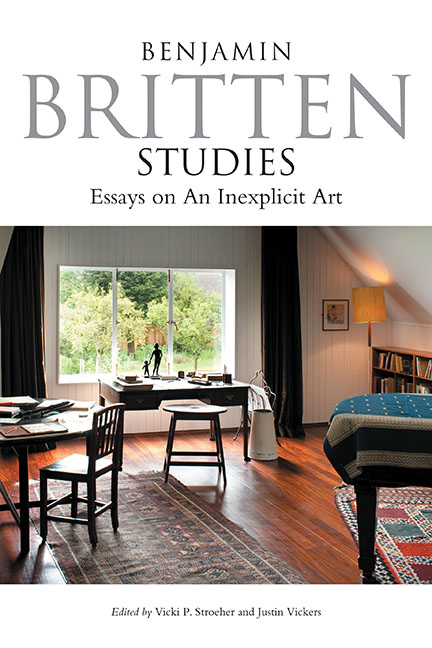Book contents
- Frontmatter
- Dedication
- Epigraph
- Contents
- List of Illustrations
- List of Musical Examples
- List of Tables
- Notes on Contributors
- Acknowledgements
- Bibliographic and General Abbreviations
- Editors’ Preface
- Introduction: Writing About Britten
- Part I Identity: Exile and Return
- Part II Britten and Intimacy
- Part III Britten and His Craft
- 8 “Take These Tokens That You May Feel Us Near”: Remembrance and Renewed Citizenship in Britten's Gloriana
- 9 Traces of Nō: Modularity and Saturation in The Burning Fiery Furnace and The Prodigal Son
- 10 Britten and the Augmented Sixth
- 11 Quickenings of the Heart: Notes on Rhythm and Tempo in Britten
- Part IV Britten and Matters of Practicality
- Conclusion and Epilogue
- Works Cited
- Index
10 - Britten and the Augmented Sixth
from Part III - Britten and His Craft
Published online by Cambridge University Press: 25 October 2017
- Frontmatter
- Dedication
- Epigraph
- Contents
- List of Illustrations
- List of Musical Examples
- List of Tables
- Notes on Contributors
- Acknowledgements
- Bibliographic and General Abbreviations
- Editors’ Preface
- Introduction: Writing About Britten
- Part I Identity: Exile and Return
- Part II Britten and Intimacy
- Part III Britten and His Craft
- 8 “Take These Tokens That You May Feel Us Near”: Remembrance and Renewed Citizenship in Britten's Gloriana
- 9 Traces of Nō: Modularity and Saturation in The Burning Fiery Furnace and The Prodigal Son
- 10 Britten and the Augmented Sixth
- 11 Quickenings of the Heart: Notes on Rhythm and Tempo in Britten
- Part IV Britten and Matters of Practicality
- Conclusion and Epilogue
- Works Cited
- Index
Summary
This essay is an attempt to gain further understanding of Britten's particular reworking, or reconception, of tonality through an examination of his use of one of its most distinctive constructs, the augmented-sixth chord. The topic was prompted initially by Derrick Puffett's claim in an article on the String Quartet No. 2 by Britten's contemporary Michael Tippett that, in contrast with Tippett in the movement Puffett analyzes, “Britten […] is not noted for his fondness for augmented sixths.” Puffett is correct that Britten is not well known for this, but wrong in his assumption that he shouldn't be. In fact, if one searches merely the output preceding his first opera, Peter Grimes (1945), one can find at least eight works in which the augmented sixth has a significant structural role.
In his book A Chord in Time: The Evolution of the Augmented Sixth from Monteverdi to Mahler, Mark Ellis suggests that the origins of the “group of chords” later to be labeled as the Italian, French, and German sixths “can be detected in the rapidly changing musical worlds of the late Renaissance and early Baroque periods.” Debated by theorists from the mid-sixteenth century onwards, the augmented-sixth chord, an entity that is itself essentially unstable, can be thought of historically as a still point in an increasingly rapidly turning musical world, maintaining its essential behavior through most of the history of notated music – across a greater period of time, in fact, than tonality itself and the chord that it most resembles in actual sound, the dominant seventh (Ellis's earliest example is by Ma doulce by Simon de Hasprois, who lived c.1350–1428). In harmony textbooks the augmented sixth is usually introduced after discussion of the applied dominant and the chromatic diminished seventh, and close to the Neapolitan chord (it falls, of course, under the category of chromatic pre-dominant). Aldwell and Schachter, for instance, place it in a section entitled “Part VI Dissonance and Chromaticism II,” after “The Phrygian II (Neapolitan)” and before “Other Chromatic Chords.” Most of their examples from real music are drawn from the Classical period (there are ten from Mozart, four from Haydn, and five from Beethoven), with a few from the Romantics, who are more prominent when inversions and “Motion to goals other than V” are introduced, and, especially, when the enharmonic potential of the German sixth is discussed.
- Type
- Chapter
- Information
- Benjamin Britten Studies: Essays on An Inexplicit Art , pp. 292 - 318Publisher: Boydell & BrewerPrint publication year: 2017



